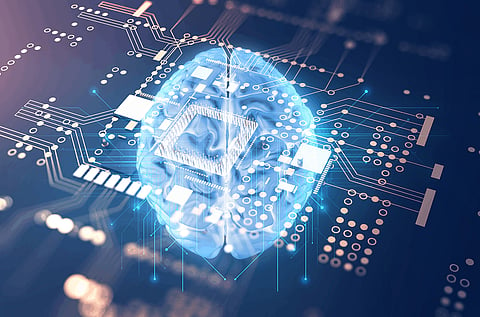

Artificial Intelligence, in the present, is perplexing and viable yet not even close to human insight. People utilize the information present around them and the information gathered in the past to make sense of everything without exception. Artificial Intelligence (AI) and data analytics are significantly much more charming, conceivable outcomes growing points, they're disruptive technologies for your business. Think about that in 2019, research firm DMI anticipates that AI would drive almost $2 trillion worth of business value. For those that need to take part in that, DMI offers 8 vital AI and analytics patterns for 2019.
It's critical for enterprises to remain ahead and not fall behind with regards to AI and analytics, DMI says. According to Srinivasa R. Vegi, executive VP for data analytics and AI at DMI says that the individuals who don't adopt AI will be the failures going ahead. A few enterprises may even be cleared out. However, machine learning, data analytics are a solid foundation of artificial intelligence.
Data analytics is no fad. Actually, the worldwide market for data analytics has been anticipated to display a CAGR of 30.08% between 2017– 2023 to outperform a valuation of USD 77.64 billion. A huge piece of this is because of the increased production of information amid the period however unquestionably more due to the expanding capability to utilize statistical algorithms and machine learning systems to convey significant outcomes for organizations. From a business point of view, data analytics can be utilized to build income, respond to rising patterns, improve operational proficiency and streamline marketing to make an upper hand. Notwithstanding, with such huge numbers of popular expressions flying about, for example, data lakes, machine learning and artificial intelligence, it tends to be hard to comprehend where the value is coming from and what an external supplier can offer.
With regards to analytics, Deep Learning has often raised a potential solution for automatically removing important patterns from extensive datasets for decision making. However, the key here is really defining and understanding the objectives of your analysis. Pre-recommended rules with explicit logic and choices are as yet priceless in helping users reveal important opportunities with a full comprehension of where the data is coming from. That is the place partnering with an organization that emphasis explicitly on the analysis you're hoping to perform can be invaluable. Organizations frequently face a predicament between bringing in extra workers or framing links with external partners. The latter getting to be undeniably more alluring with the relative scale empowered by cloud platforms.
Machine learning is a sub-field of AI that furnishes frameworks with the capability to gain from data and improve after some time without being expressly modified. Machine learning algorithms use information to produce and refine rules. The computer at that point chooses how to react dependent on what it has gained from the data. The key here is that you're giving the data a chance to control the advancement of rules. Machine learning procedures can utilize different information types, including unstructured or semi-organized data, to help infer the understanding that prompts framework produced actions and decisions.
Let's think about a purposely straightforward example. With classical machine learning, you could give a framework a lot of features common to cats in photographs of a few sorts of creatures. You could then give the framework a chance to deal with databases loaded up with photographs of animals and discover which mixes of human-provided features distinguish every one of the cats in the blend. Simultaneously, the machine learning framework improves and better as it gains from its experiences with the data.
Deep learning is a sort of machine learning based on a deep chain of the importance of interconnected "neural network" layers, with the ability to learn key "features" from the data given to the framework. The deep learning technology takes monstrous amounts of data and decides the basic rules and features related to the data. Similarly, as with classical machine learning, data manages the training of the deep learning model. Talking further on our cat example, in the event that you give a deep learning framework enough pictures of cats, the framework can, all alone, decide the features that make a cat a cat, for example, attributes identified with the eyes, ears, whiskers and tail. This ability to learn goes past that of traditional machine learning, on the grounds that for this situation you don't need to advise the framework what features to search for. It makes sense of that all alone.
The utilization cases for AI are for all intents and purposes boundless, traversing from healthcare and financial services to assembling and national defence. If you have monstrous amounts of information, AI can enable you to discover and comprehend the patterns in it.
Join our WhatsApp Channel to get the latest news, exclusives and videos on WhatsApp
_____________
Disclaimer: Analytics Insight does not provide financial advice or guidance on cryptocurrencies and stocks. Also note that the cryptocurrencies mentioned/listed on the website could potentially be scams, i.e. designed to induce you to invest financial resources that may be lost forever and not be recoverable once investments are made. This article is provided for informational purposes and does not constitute investment advice. You are responsible for conducting your own research (DYOR) before making any investments. Read more about the financial risks involved here.
